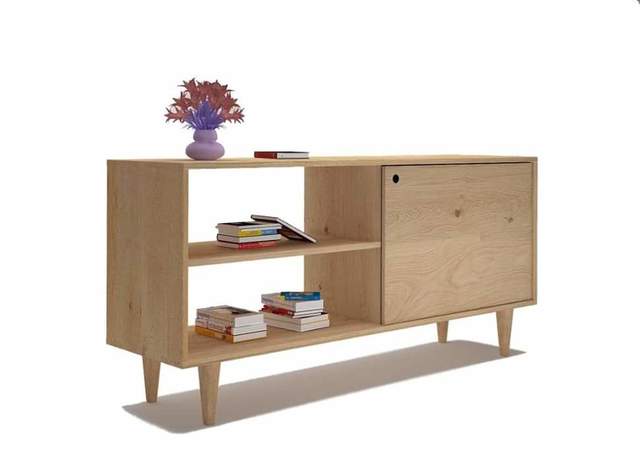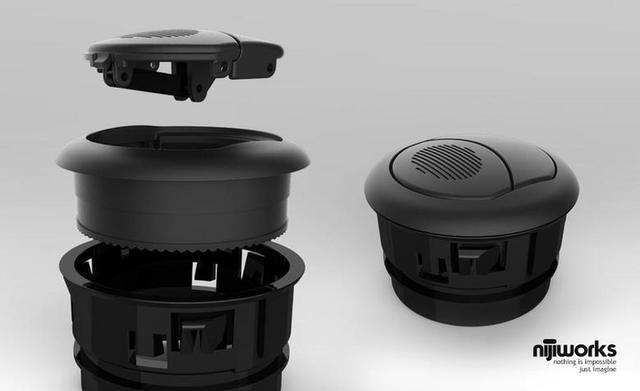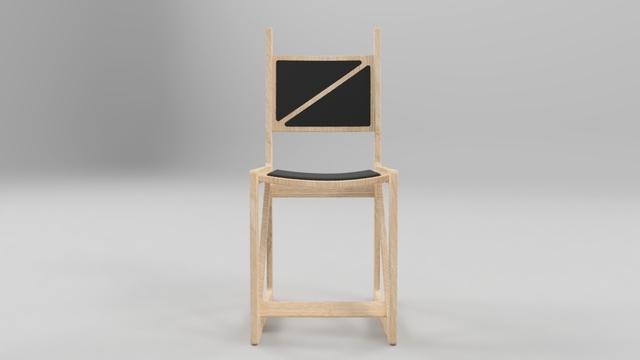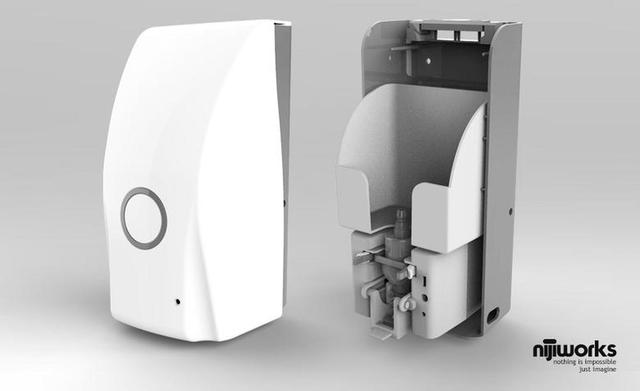Industrial design is a common process that is used in a variety of different businesses and industries. This design process emphasizes user experience. Industrial designers use insight and research to create products that are functional, enjoyable, and straightforward. They provide a rewarding user experience and leave customers with a positive reaction.
This process is extremely important within the product development cycle. If you want to utilize the services of an industrial design company, you must know how they work and the processes they will complete. In this article, we discuss exactly that. This comprehensive product development guide offers a stage-by-stage breakdown of how industrial designers work and what it takes to take an initial concept through to design, production, and market release.
 Table of Contents
Table of Contents
Idea brainstorming / generation
The first stage is where initial ideas are discussed. Obviously, there must be a starting point—an instance where the general concept of the product or products is formulated. Without this stage, nothing else can happen.
Various teams may be involved in the brainstorming and generation process—marketing, industrial design teams, and even directors or shareholders. This process could happen regularly throughout a year—companies will often have brainstorming sessions to think of new products:
The basic formulation of ideas through brainstorming
First and foremost, a simple brainstorming session may be held. The invention design team will sit down and let the creative juices flow. They may doodle and draw rough designs. Alternatively, they may use computer software to play with preliminary design ideas. The basic premise here is to formulate a simple idea of a product and answer the following questions:
- What does it do?
- What is its main purpose?
- How does it work?
- Who is it aimed at?
Conceptual sessions like this will often be a joint venture between the industrial design team and yourself. Your business will provide basic information relating to what you’re looking for. The industrial design team will then use this information to formulate basic concepts. There could be many individual sessions like this that are held until both parties are happy with the main concept created.
Identifying consumer demands and trends
To create effective product designs, industrial designers will utilize a wealth of readily available information. They will look at current market trends—what items are popular? What items are phasing out of fashion? Are there any new trends set to break the market? Moreover, they will look at consumer statistics to formulate an ideal demographic that their product is suitable for.
Looking at competitor products
Although plagiarism is frowned upon, businesses will commonly look at competitor products. Identifying successful and unsuccessful competitor products is a great way to analyze what works and what doesn’t. Industrial designers often use information like this and take concepts and design ideas from the best competitor products to improve them.
Taking ideas from existing products
In addition to utilizing competition, industrial designers will consider your businesses existing product catalog for inspiration. Let’s say, for example, that your business manufactures high-quality dining furniture. The furniture design engineers may look at previous models to gain an understanding of the expected quality levels and the common design features used.
Creating basic specifications, shapes, and parameters
Although still in the conceptual phase, parameters like shapes, dimensions, colors, and materials are still often discussed. A product design service wouldn’t simply create a design with no clear idea of the items form or appearance. The initial concepts will not include detailed and accurate specifications, just brief notes that are built on in future stages.
Analysis of product viability
Once initial ideas have been generated and a single product concept has been chosen, the design must be assessed for viability. The industrial design company will not jump into anything without proper assessment and discussion with you, the client, first.
Imagine designing and producing a product that has no use or no demand? This is one of the most important stages of the product development process and includes the following stages:
Supply and demand
One of the most basic concepts of product design is supply and demand. Businesses identify a gap in the market or a particular need the customer has. They then create products to fill this need and niche. Moreover, for a product to be successful, there must be a genuine demand for it.
For example, there is a real demand for household furniture—practically every property has some form of furniture. This demand would be assessed and a relative supply then formulated. There should only be a high supply if the demand matches. Otherwise, a business would create large volumes of products that will simply not sell.

For example, there may be a high demand for furniture in general, but is there a market demand for three-legged chairs made from coarse metal? Certainly not! In this scenario, there is no genuine demand for such a product, so it would not be a viable choice. Furniture design companies must assess the supply and demand for their concepts and ascertain if there is even a market and want for such an item.
At this point, some product designs may be halted completely if there is no demand. If this is the case, the industrial design company would revert to stage one and create new concepts.
Potential pricing and cost
The financial aspect of product design is just as important as the need and functionality. A whole host of financial information would be assessed before progressing any further with product design and manufacturing. Considerations to make would include:
- Potential production costs
- Raw material costs & availability
- Realistic selling price
- Distribution costs
Essentially, during this stage, a business must produce an overall cost per unit—the cost that is required to create one product. Creating such a figure requires an analysis of the various processes involved like shipping, acquisition of raw materials, and overheads. This estimated figure can be used for numerous purposes. For example, it can be used to determine a realistic selling price—a price that covers these costs and generates profit.
RELATED: Product development guide: How an industrial design company develops your idea
This brings us to the other important aspect of finance—pricing. A realistic selling price must be determined. This should reflect the quality and purpose of the product. Furthermore, it should be realistic in comparison to similar products on the market.
Understanding both cost and pricing allows a business to determine if the product design is financially viable.
Functionality
Finally, during the product analysis, its functionality and usage must be determined. Industrial designers place usability and ergonomics as a priority. They design primarily for the end-user and their enjoyment. Once initial concepts have been drafted, the industrial designers can then assess the functionality and ask some of the following questions:
- Is it safe to use?
- Is it comfortable to use?
- Does it look pleasing?
- Is it fun to use?
- Is it fit for its primary purpose?
- Is it easy to use?
Many questions must be asked to determine if the design itself is viable. If it is, the industrial design team can progress to stage three. If the design is flawed, changes must be made, or the idea must be scrapped completely.
Product design and specifications
If the product concept is valid and has a genuine niche in the market, the main design phase can begin. During this stage, the concept is turned into a fully-fledged design. During the 3D product modeling service, this stage does not include manufacturing—as you will see, this follows in a later stage.
The design of the product is extremely important and affects the rest of the development stage, and ultimately, the success of the product once it’s released into the market:
Draft design using 3D modeling or CAD design software
On the successful assessment of the concepts, the first designs are produced. This is where notes and concepts are turned into models using computer software. Consumer product designers will have great knowledge of 3D design software or CAD software. They will create detailed 3D designs using this software. Designs could include the following:
- Dimensions
- Angles
- Textured surfaces
- Diagrams of individual parts
- Footnotes
The 3D models and drawings will contain a wealth of information so that they can be interpreted and turned into a working prototype.
Creation of a mechanical specification
The design specification and mechanical specification are two different items. As mentioned before, industrial designers concentrate on the shape and form of the item. They usually don’t concern themselves with mechanics, or electrics.
For example, if the product has moving parts, a mechanical specification would be created by another department based on the industrial designer’s notes. This is the job of the mechanical engineering service.
Style guide and branding
A main consideration during the design stage is to look at the company branding. In most instances, new products must reflect the company branding. This could be in numerous ways like the inclusion of logos, specific color schemes, or certain imagery. Ideally, the company will have a standardized style guide that designers can utilize. Furthermore, managers or directors may have input and request the product contain certain brand elements.
Consistent branding through product ranges ensures brand awareness is raised. Moreover, it ensures customers begin to associate your business with certain types of products, etc.
Consideration of regulations and required standards
Regardless of usability and aesthetics, design teams often have to consider industry regulations and standards. Products may have to meet certain health & safety requirements, for example. Furthermore, companies may be audited by ISO or other governing bodies and may have to comply with certain standards.
The design engineering freelancer should have a clear understanding of any requirements like this. They may have to check things with the quality department, or health and safety advisors, however.

Prototype development
Once the product is designed, most companies produce working prototypes. A prototype is effectively a draft version of a product. It is a necessary process within the product development cycle to ensure the design is viable and the product works.
The industrial design team and prototype teams will work together to create a working version of the item. This could include different processes like CAD or CAM. Usually, the design is transferred digitally using CAD software like SolidWorks or CATIA.
During this stage, the business can start to look seriously at how the product is made. They would use proper materials and try to emulate potential production processes that would be used during manufacturing.
Product and prototype review
Throughout the product development cycle, there is a need for continual reviewing. If designs, prototypes, and products aren’t reviewed, potential errors could slip through and cause major problems. Both the product itself and the prototype must be reviewed to ensure they are fit for purpose, functional, and meet the requirements of the initial design plans:
RELATED: Why is industrial design important for new product and prototype development?
Is the prototype practical, functional, and fit for purpose?
As with previous stages, the product must be assessed for its functionality. Extensive testing is performed on the initial prototype. This is to determine how it feels, looks, and works as a physical item. There is sometimes a discrepancy between what is designed on CAD software, for example, and what we can create with physical materials.
The prototype design team will test the item and check that it is viable. They will look at its functionality—does it do what it’s meant to do? Moreover, they analyze the aesthetics and ergonomics of the design. Is it easy to use? Is it pleasing to look at? If there are any issues, these are reported to the design team who would review and make necessary changes.
Does the product meet the initial design brief?
Another important factor to consider is if the product meets the initial design brief. When designing the item, the industrial design team should have set goals and targets. For example, the product should do X or should look like Y and function in Z way. Once the prototype is created, these targets can be cross-referenced with the design brief to ensure the designer’s vision has been achieved.
During this stage, the designers may inspect the prototype to ensure that they are happy with the item and how it physically appears.
Are there any flaws that need correcting?
Finally, the product is checked for any flaws. This could be anything from flaws in the design that cause an issue with the functionality of the product or visual flaws, for example. The prototype stage is where any issues with the item are corrected.
This is vital, otherwise, the freelance prototype design engineers would progress into production and could potentially cause manufacturing issues and additional expense if defects were found after mass manufacturing. Any issues found would first be dealt with by the prototype team—errors could result from production methods, for example.
If the flaws are design related, the industrial designers would get involved and look at ways of changing the item without compromising its usability and ergonomics.
Live market testing
Before the item is fully released into the market, industrial design teams and new invention design services often advise market testing. It is prudent to create a small sample of items and push them into the market as a trial run. This offers several benefits.

First and foremost, it allows you to gauge parameters like customer reaction, sales percentage, overall perception, and sale demographics. Furthermore, ensure you can avoid a huge mistake that could cost your business vast amounts of money.
The following are common steps involved in live market testing:
- Produce a sample batch of new products
- Sell these products in a controlled situation i.e. with a particular retailer
- Set a time-frame in which you want to evaluate the initial test
- Evaluate and review the test and make adjustments if necessary
Firstly, a batch of products would be created. The quantity produced should have been decided beforehand based on budgets and production constraints. Secondly, it would then be decided on how these items are to be distributed and sold. For example, you may choose a local retailer or a specific chain of shops to target. The idea is to keep the sale of this test batch controllable—it needs to be controllable so that you can effectively analyze the results.
When deciding on a suitable batch number, you would also decide upon a timeframe. There must be a cut-off point—an endpoint at which you can stop the testing and gather your review data. Finally, you or your consumer product designer would evaluate the success of this market testing. Information you would collate would include:
- Units sold
- Profit margins
- Initial customer reaction
- Customer feedback
- Ease of distribution
Basic figures and financial statistics are important. Out of the batch, how many units did you sell? What profit did you make on those units? Was the overall test a financial success? In addition to this, it is important to gather customer feedback. This could be simply by asking retailers what comments were made during a sale. Alternatively, this could include questionnaires and surveys asking for detailed customer feedback.
Any information you can obtain relating to the test is vital. Why? Because it ensures that you can make any changes required to improve the full product release if you still deem it is viable. The main point here, however, is that through industrial design, a product should never fail. Industrial design is a thorough process that puts customer experience first – throughout previous stages, steps should have been taken, to ensure the product is viable and user-friendly. This, in theory, should make the live testing stage relatively straightforward.
Product release
Once the product engineering service is happy with the current progress of the product, it will be placed into full-scale production and released into the market for distribution. This is where the hard work pays off—hopefully, manufacturing will run smoothly. Furthermore, if the industrial design team has done their job properly, the item will sell like wildfire and turn into a worthwhile venture.
The hard work doesn’t stop there, however. The product release is often the most challenging part of the product development cycle. There are many factors involved that could potentially go wrong. This will take a combined effort of different departments including the design team, production, marketing, and sales to make the product release successful. Continual monitoring is required to ensure that any issues are addressed quickly and effectively.
Evaluation
The final part of the product development process is to evaluate. As with some of the other processes, evaluation happens throughout. A quality business will always evaluate at different stages—this builds on the idea of continual improvement. For product development, the main evaluation stage happens once it has been released into the market.
Analyze sales figures and overall performance
With most companies, the bottom line is sales figures and profit margins. How many units you sold and how much profit you made on those units is what keeps your cash flow lucid. It’s what allows businesses to cover the design and production expenditure but also invest and build for the future. First and foremost, businesses will analyze the financial success of the product.
Secondly, companies will also analyze the product itself including the following:
- Customer feedback
- Customer complaints
- Defects and errors
- Competitor reaction
- General market perception
Gaining valid customer feedback is important during the evaluation stage. You will have already done this on a much smaller scale during the live market testing phase. Once the product has been released full scale, however, you must continue to collect data that can be analyzed and used for future product development.

It is important to look at customer complaints and defects. Were there any glaring issues that weren’t picked up during the development stage? Were there any negative customer reviews? If so, why? Was it something about the product they didn’t like? Or maybe it was something that you couldn’t control, like the behavior and service of a retailer? Understanding both the positives and negatives is vital so that you can gain a clear idea of the success (or failure) of your product.
RELATED: Why is industrial design important for new product and prototype development?
In addition to this, looking at competitor reactions and the general market perception is also important. How did competitors react to your product release? Did other businesses think the item was a strong product? Evaluation material is hugely important and can be used to improve the industrial design process for future ventures.
Analyze the production development process
Aside from looking at the product itself, engineering design and CAD services will review the production development cycle too. Reviewing the actual process undertaken to create a product is highly valuable. If there are inefficiencies and areas to improve within the process, you could improve design and production for future projects. A business may look at the following pointers:
- What worked well within the development cycle?
- Which stages gave the best results?
- Were there any stages that needed improvement?
- Were there any bottlenecks during the design process?
- Was the research detailed enough to create a worthwhile product?
So many potential questions could be asked. As with the product evaluation, the information you find during the process evaluation stage can truly help. Let’s say, for example, that you found the initial concept stage wasn’t as vigorous as you intended. A minimal number of ideas were generated with poor brainstorming.
This ultimately led to the creation of an average product that did not sell as well as anticipated. When reviewing this, you may decide that more emphasis and effort is required for the concept stage. Small changes like this through evaluation can make a huge difference in future projects.
Understanding product development is essential for the success of a business
We hope you have found this guide beneficial. The product development cycle is something that businesses must understand. Without a comprehensive product development cycle, you may struggle to create high-quality products that perform well in live markets.
Alternatively, if you are a company that outsources their product development to a third-party industrial design team, you still must be aware of the process. By understanding the process, you know what to expect and how to prepare yourself. Furthermore, you know what the design company should be doing at each stage of the process.
If you need the services of an industrial designer, remember that Cad Crowd can help. We work with a host of talented, professional industrial designers who can complete processes similar to the above. If you want to find out more information about the services we provide, please contact us today and we will be happy to give you a free quote.
